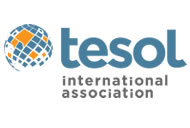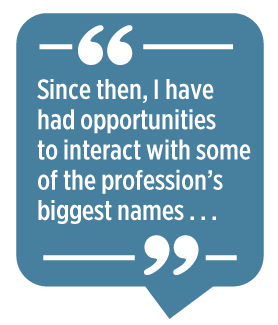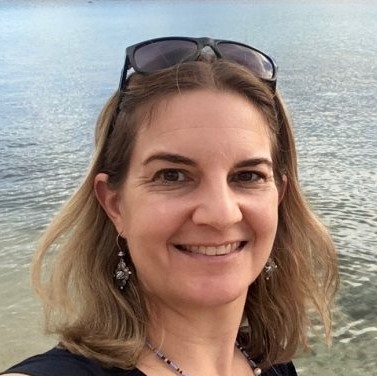TESOL Board Connect: The Rewards of Being a TESOL Member
by Justin Shewell

I was first introduced to the concept of a professional
association while studying as an undergrad in the BA TESOL program at
Brigham Young University (BYU)–Hawaii. We had a small student-run
organization on campus called the BYU-Hawaii TESOL Society, and we had
regular meetings where we did workshops and general professional
development, as well as social gatherings. We also organized trips to
events in the larger community, including the annual conference of the
local TESOL affiliate, Hawai‘i
TESOL. I was always thrilled to meet other students and TESOL
professionals and learn about what they were doing in their classrooms.
Our professors always encouraged us to participate in association events
and stressed how professional associations contributed to our
development as TESOL professionals.
I served as president of the BYU-Hawaii TESOL Society for 2
years. Just before my second year ended, we decided to organize a trip
to the 34th Annual TESOL Convention in Vancouver, Canada. We held many
fundraising events throughout the months leading up to the Convention,
and through a generous donation of scholarship funds, we were able to
raise the money to send the first-ever group of TESOL undergraduate
students from BYU-Hawaii to the Annual TESOL Convention. The experience
of attending the Annual Convention was amazing and it was such a good
experience that BYU-Hawaii has sent a group of students to the
Convention every year since. But that is a story for another
time.
As part of registering for my first-ever TESOL Convention, I
joined TESOL as a student-member, mainly to get the discounted
conference registration rate, and for the first few years, my activity
and use of my TESOL
membership was tied to my Convention attendance. I couldn’t
attend the Annual Conventions in St. Louis in 2001 and Salt Lake in
2002, and I think I chose not to renew my membership, opting instead to
join the local TESOL affiliate in Korea, where I was working at the
time. I enjoyed the professional development events and connecting with
local TESOL professionals, but when I attended my next TESOL Convention
in Baltimore in 2003, I renewed my TESOL membership.
It was then that I began to realize the benefits of being a
part of an international association of TESOL professionals. I joined
several of the interest sections, which gave me access to their email
lists. I reached out via email to the lists a few times when I had
questions or needed ideas for lesson plans or materials, and I was
amazed at the responses I got. Since then, I have had opportunities to
interact with some of the profession’s biggest names and share ideas and
resources via the interest section email lists. At first, I was
surprised that someone who wrote a textbook I used in my TESOL program
would take the time to respond to an email from a student in an interest
section email list, but I soon came to realize the community and sense
of family that TESOL members share. Now, years later, when I see emails
from students and new TESOL members, I do my best to respond and share
ideas and give them that same sense of belonging.
 Another benefit of my TESOL membership that I made great use of
was the free subscription to TESOL
Journal. Each issue was full of great ideas for
lessons, reports of the latest research being done in the field,
teaching tips, and many other resources that gave me inspiration for my
own classes. I also enjoyed receiving the English Language
Bulletin, with links to articles and other
TESOL-related resources.
Another benefit of my TESOL membership that I made great use of
was the free subscription to TESOL
Journal. Each issue was full of great ideas for
lessons, reports of the latest research being done in the field,
teaching tips, and many other resources that gave me inspiration for my
own classes. I also enjoyed receiving the English Language
Bulletin, with links to articles and other
TESOL-related resources.
In more recent years, I have applied for and received TESOL
awards, including the Albert H. Marckwardt Travel Grant in
2011 and the Betty Azar Professional Development Travel Grant in 2017,
which helped me attend the Convention. I also received the D. Scott
Enright TESOL Interest Section Service Award for my service to the
Computer-Assisted Language Learning Interest Section, which was a
highlight of my career.
I have also purchased several books and other materials from
the TESOL
Bookstore at discounted member rates, and sent letters to my
elected officials through the TESOL
Advocacy Action Center. These are all things I wouldn’t have
been able to do without my TESOL membership. However, the biggest
benefit I have received from my TESOL membership has been the
opportunity to serve my fellow TESOL members and the profession in
volunteer leadership positions over the years.
I began by getting involved with the Computer-Assisted Language
Learning Interest Section, first serving on the steering committee and
then as chair-elect, chair, and past chair. I had the opportunity to
serve on the Awards Committee, coordinating one of the aforementioned
TESOL awards, and to serve as chair of the committee before being
elected to the Nominating Committee. Serving on the Nominating Committee
and having the opportunity to help choose the people to be on the
ballot and potentially lead TESOL into the future was a humbling
experience. Even more humbling has been my service these last 3 years as
a member of the TESOL Board of Directors. Every volunteer leader gives
of their time, their efforts, and their heart to further the mission of
TESOL International Association, and I count myself honored to be
among such a wonderful group of TESOL professionals that care about the
members and the well-being of the association and the
profession.
None of these experiences would have been possible without
TESOL membership. That is why I have renewed my TESOL membership every
year, even when money was tight and I wasn’t sure I could afford the
membership fees, because I realize that the value I get for the
membership fee far outweighs the monetary value of the fee itself. If
you are on the fence about joining or renewing your membership, I
strongly encourage you to consider the benefits to your career and
professional development, and to think about all the good you could do
by connecting with other TESOL members, sharing ideas, and perhaps even
serving as a volunteer leader yourself.
In the words of late TESOL International Association founder James E. Alatis,
“We are an organization dedicated to fostering and maintaining
excellence in our profession.” Now don’t you want to be a part of
THAT?
Justin Shewell has been a member of TESOL International Association for almost 22 years and has just completed a 3-year term as a director on the Board of Directors for TESOL International Association. He is an educational technologist at Arizona State University and has a PhD in educational technology from Arizona State University and an MA in TESOL from Brigham Young University in Utah. Learn more at jshewell.com.
TESOL Blogs
Interested in writing a blog for TESOL?
Read the submission guidelines and send us your post!
Check out some of the most recent TESOL Blogs:
|
Assessing Writing, by Betsy Gilliland

I am collaborating with a Japanese colleague to revise a rating scale for the undergraduate English for Academic Purposes program at her university. She had noticed that even though the program had developed an analytic rubric, some high scoring essays didn’t actually seem to be very good, and conversely, some low scoring essays actually seemed much better than their scores reflected.
Talking about this dilemma, we realized that the missing piece in the analytic rubric was something like “sophistication” or “insight.” Reading students’ essays, we could sense the writing was sophisticated or the writer had insight into the topic, but these qualities were not reflected in their numerical scores on the analytic rubric. In order to add an element to the rubric for sophistication, we had to figure out how to explain to the dozens of lecturers using that rubric what we meant by sophistication. Read more. |
|
STEM and ELD: 2 Great Strategies for Building Vocabulary in STEM, by Darlyne de Haan

Vocabulary remains a major factor in English learners (ELs) learning grade-level content. Here, I share two strategies that will pave the way for your ELs to use their previous knowledge to acquire their second language content.
Learning logs are a way to capture your lesson’s content and the language needed to understand it. It can also be used as a way to record information for future reference. Interactive pictorial graphic organizers are a visual scaffold to help your students understand content. Read more.
|
|
Optimizing Reading Comprehension for MLLS: 6 Strategies, by Judie Haynes

When my school first adopted the Reading Workshop, a teaching method in which the goal is to teach students strategies for reading and comprehension, I became a proponent of this approach and worked to find ways to adapt it to the needs of multilingual learners (MLLs). I found that the Reading Workshop method allows teachers to differentiate and meet the needs of all their students.
In 2014, when I first started to write blogs for TESOL, I developed a six-blog series of articles on the Reading Workshop strategies to teach reading comprehension to MLLs. In this post, I will list the strategies and provide a link to the original blog. Even if your school uses a different type of reading program, you can incorporate these six strategies to support all the students in your class to better comprehend what they are reading. I found them to be profoundly successful when used with elementary-age MLLs. Read more. |